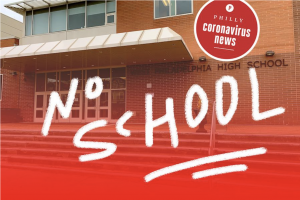Posted by: Francis Koster Published: August 6, 2020
How kids can save online learning
 A fierce disorganized debate is raging as our country approaches the time schools traditionally open. Millions of citizens afraid of suffering lifelong damage to their health from the virus are trying to stay home, wearing face masks if they go out, and otherwise avoid being in large groups.
A fierce disorganized debate is raging as our country approaches the time schools traditionally open. Millions of citizens afraid of suffering lifelong damage to their health from the virus are trying to stay home, wearing face masks if they go out, and otherwise avoid being in large groups.
There is tension between this group and the folks who desperately want life to go back to something resembling normal with schools in session. Other millions find themselves in the middle, unsure what to do. For many, it feels like the ship is in danger of sinking, and people are looking around for life rafts should they be needed.
The way we operate K-12 education in this storm is one of the largest public policy questions in our society because one out of five Americans either attend or work in schools (1). What happens next in American schools will deeply impact the lives of the students, their teachers, family members, and our entire society.
Stay-at-home distance learning using computers is one area that looks like a life raft by many.
Reports of how well distance learning went as the COVID-19 virus emerged last spring range from adequate to awful to disastrous. According to Education Week, when the virus forced school buildings to close early and education went online, about one-fifth of all students never attended classes at all, and only 4 out of 10 engaged with their teacher more than once a week (2)!
There are several reasons for this, often driven by the students’ home situation. If they are from a household that is struggling financially due to lay-offs or quarantine, they may not be able to afford internet service. If they are doing distance learning by cell phone, the cell phone billing plan their parents have can make minutes very very expensive.
In a surprisingly large number of households, because of financial issues, parents have to choose between paying the water and food bill or having their child talk to their teacher. This can be on top of other stress, like parents who need to work and cannot supervise their students school work.
Distance learning has challenges that our society has to meet quickly. And we have a talent pool that can help.
Ms. Logan Spoonemore, a high school junior who lives in Seattle Washington, recruited a group of 70 other students to be on-line math tutors for younger students. They created a website that links tutors to students, and have a rapidly growing list of volunteer tutors and students who need help (3). You can see the site by searching on Students Helping Students Seattle.
In rural West Virginia, the Martinsburg school superintendent formed an online tutoring program for elementary students using student members of The National Honor Society in all four high schools in the county. The student tutors lead chat rooms complete with games that can be solved using math (4). In other efforts, high school students are paired up with professional teachers as teachers’ aides, something that the younger students seem to really appreciate.
The COVID-19 epidemic is hitting low-income households much worse than the homes of the more privileged. One example of a program that has been created to facilitate higher grade level students support those kids can be found at TeensGive.org.
As a society, we need to move quickly to get programs like this in place.
As their budgets are frozen or cut, school leaders have been asked to totally reinvent their industry in just a few months. A large number of teachers have never been trained to teach online. School technology support departments are being challenged to significantly expand both the range of services they offered and the number of people they support.
To help their children, parents are faced with being asked to use technology that many of them had not used before. And for older parents with high school students, the lessons being taught in many subjects like biology and science are vastly different than the material the parents learned 20 or 30 years ago.
It will not be possible for our school systems to fix this by themselves. Everyone has to pitch in.
When school opens in two weeks, a majority of all students will be engaged in online learning.
Over those same two weeks, the number of infected Americans is expected to increase again by half from today’s levels as we sail toward an entirely infected population by the beginning of 2021.
The bottom line is this: Our world is in a large and growing economic and healthcare mess that can be reduced – but only if you pitch in.
You can help set up learning groups of neighborhood children who hold Zoom calls, or volunteer to be an electronic assistant to a teacher whose students badly need more contact with mentors. You can volunteer to assist school staff track down missing students, or those in need of some special attention.
What you cannot do is stand there doing nothing while the ship is sinking.
[1] https://www.edreform.com/2012/04/k-12-facts/
[2] https://www.edweek.org/ew/articles/2020/04/10/national-survey-tracks-impact-of-coronavirus-on.html
[3] https://www.seattletimes.com/life/seattle-area-high-school-students-offer-free-virtual-tutoring-to-younger-kids-during-coronavirus-pandemic/
[4] https://www.journal-news.net/journal-news/high-school-students-give-back-through-online-tutoring/article_b125a8fa-16b3-5c1a-bc0b-82e871563d34.html
Copyright © 2020 The Optimistic Futurist. All Rights Reserved.
Francis P. Koster Ed.D.
Proven local solutions to national problems.
CONTACT
Copyright © 2023 America's Optimistic Futurist